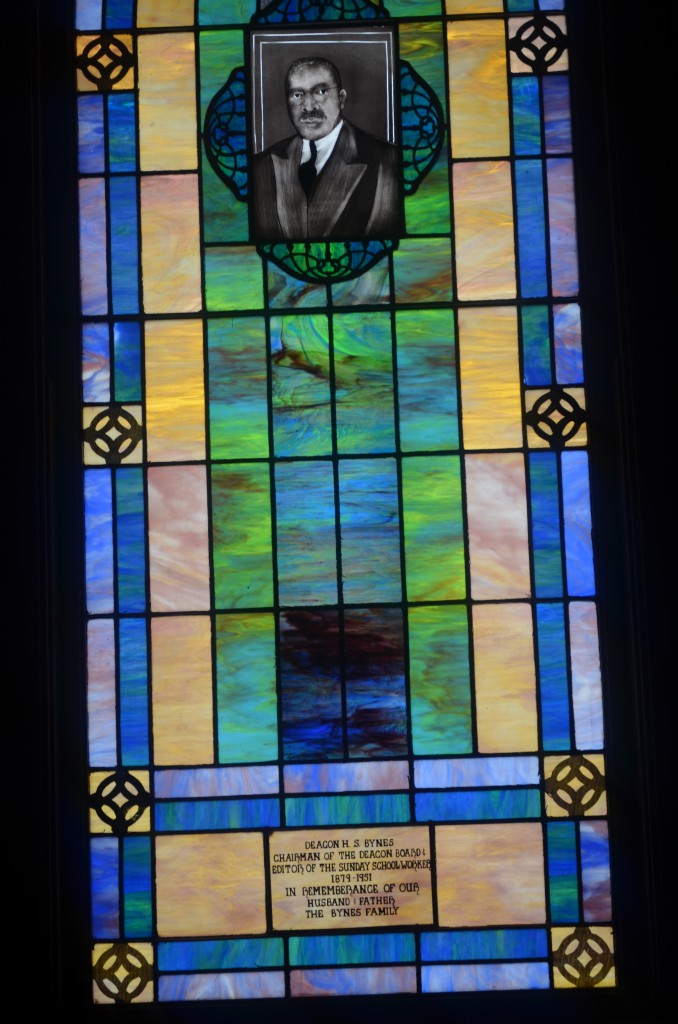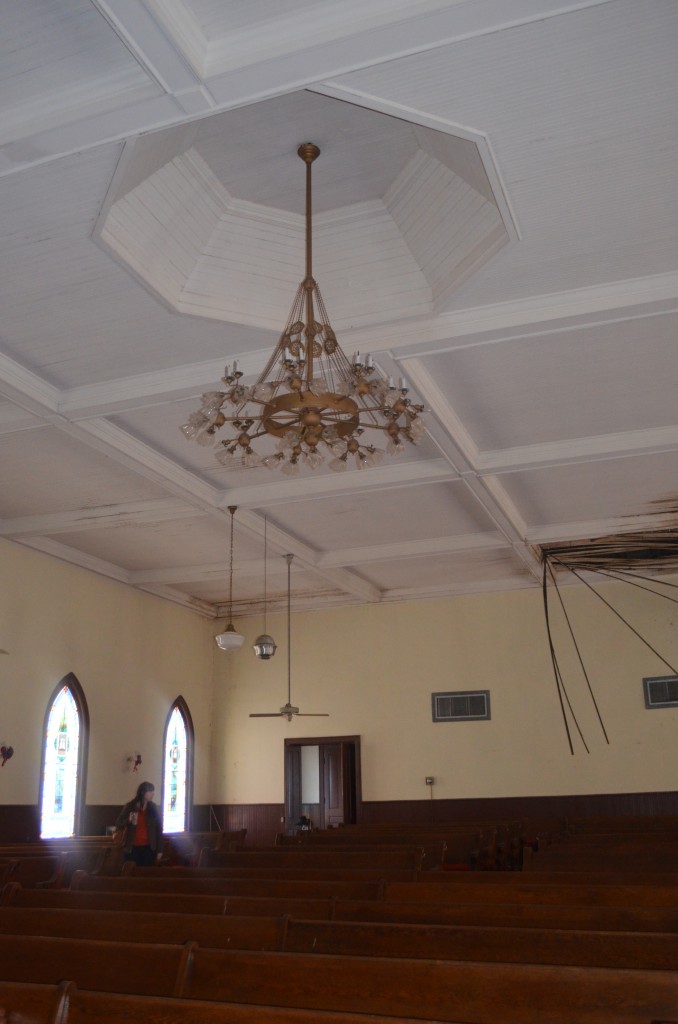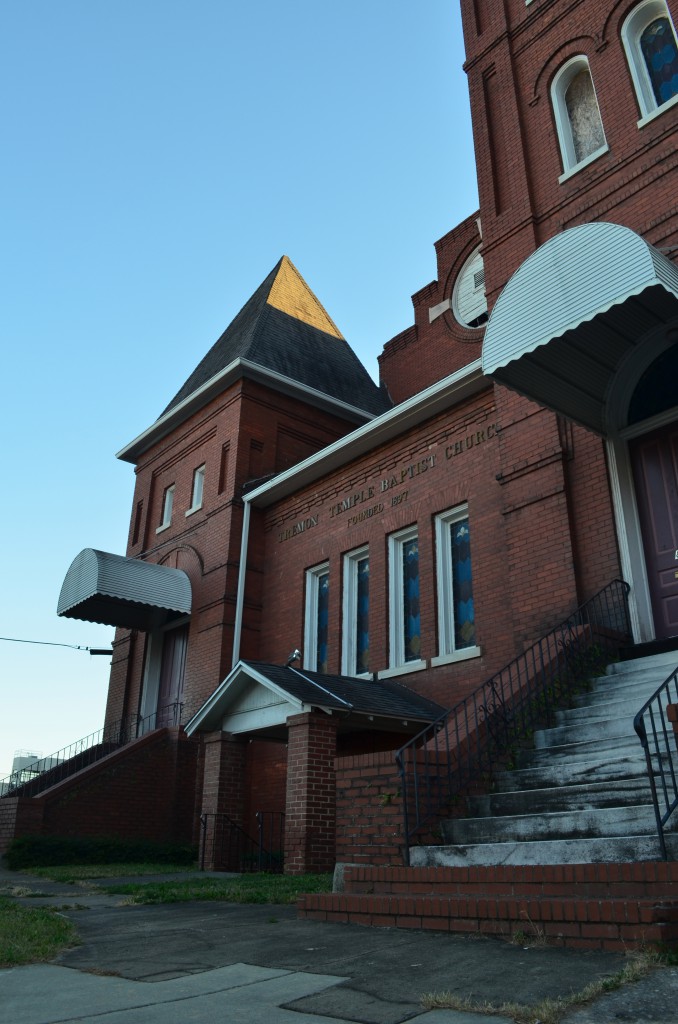Tremont Temple: An Opinion (And Pictures)
*Note: the pictures placed here are the ones not used in my Cluster piece, which you can read and see here: http://mercercluster.com/historic-tremont-temple-threatened-with-demolition/, to scroll through these pictures place your cursor over the right or left hand side of gallery and click through
Full disclosure: I am a patron member of Historic Macon, which basically means that one week a month I give up my Starbucks addiction to give to this group.
I grew up in a historic home, and my grandmother owns a Neel Reid home which I have claimed will be mine once she leaves it.
When deciding to tackle this story, I had to make sure I reported it from the perspective of someone who isn’t as passionate as I am about historical structures. There are some very valid questions regarding this whole issue- how did we get here to begin with? Why did the church wish to bypass design and review board- and did they in fact do so or did this board not meet with them? Is this church on the historic registry? And then also, what about the fact that this church holds historical significance in regards to the struggle for Civil Rights in the 1960’s in Macon, Georgia, a town that is still very divided racially?
After sitting in a Planning and Zoning Board meeting for nearly three hours, interviewing Dr. Andrew Manis author of ” Macon Black and White” for almost an hour, speaking with Josh Rogers of Historic Macon, stumbling across a factor of this story by sheer accident via an online search and getting to go inside the building myself I feel like I have discovered a few things.
1- Historic Macon says they have discussed the sale of this building with Tremont Temple on multiple occasions. My understanding through various conversations, and I am not quoting any one organization or person, is that the church was initially asking almost five times what the Dunkin Donuts developer would be paying for it. That’s a significant number. Somewhere along the line a buyer showed interest in the building and according to my interview with Jim Rollins after Planning and Zoning a contract was placed 90 days ago. Rollins also stated this is the standard amount of time for something like this to move forward.
2- Historic Macon found out about this once the demolition request was placed. My understanding is that typically a buyer would meet with the Design and Review Board before placing such a request with Planning and Zoning, Rollins states that they attempted to meet with this board and only two members were present. I do not know how many people sit on this board- if only three people sit on it that’s different than if 10 sit on it and only two were there.
3- In regards to whether or not the building is structurally sound, Josh Rogers has told me over text today that it “needs stabilization but it’s affordable”.
4- Jim Rollins and The Summit Group is also trying to purchase a historic building in Canton, Georgia to turn it in to a gas station. To read the full story in the Cherokee Tribune please go here: http://www.cherokeetribune.com/pages/full_story/push?article-Planning+commission+strikes+down+gas+station%20&id=24086263 . Now, do I think Jim Rollins is maliciously targeting historic buildings? No, I do not. But it is a troubling coincidence, especially for a gentleman who says his wife is a member of Historic Macon. (And I realize should I ever see them face to face at a function I am placing myself in an awkward position.)
5- Historic buildings have been repurposed many times, even churches. Some examples in this article in Mental Floss include a children’s playground, a bookstore, and even a private home. The other question presented by friends of mine via social media is, what if the building stays empty? What is better, for the building to stay empty and decaying or to be torn down? This is predicated on the assumption that Historic Macon cannot find someone to renovate the building, but as I quoted Josh earlier it is affordable. There was recently an article in The Telegraph about Macon leading the way in Georgia in regards to restoring historic buildings.
I’m going to quote some local leaders in regards to this issue now, as I was not able to use them in my article (only so much space, y’all):
Frank Dixon: ” Downtown should be modern, but should also include parts of our past. Tremont Temple serves as reminder of a time where equality was not the law of the land, but people of color still gave thanks. We would not consider tearing down the Hay House, nor should we tear down this house of God that helped carry us through troubled times and served as a refuge to the needy.”
Miriam Paris: ” Historic Tremont Temple Baptist Church, aside from being a downtown place of worship for the African American community in the 60’s, was the cite of many civil rights meetings, I believe the Dr Martin Luther King addressed a crowd from the pulpit there and should certainly be preserved as a place of notoriety and cultural importance.” (Tremont Temple states on their website that Dr. King spoke there, as well as other civil rights leaders.)
Now, after speaking with Dr. Manis at Macon State, there is another part of this to keep in mind. I was not able to quote as much of him as I wanted to, most especially his statement that he is aware ” a snowball has a greater chance in hell of this happening” about white churches contributing financially to save the building, however I came away from that interview with another perspective. What would it say about us as a community could be willing to let a structure that was significant in the fight for civil rights be torn down? Manis makes a good point, that IF churches- and he does say in the interview that black and white churches should come together for this- if these churches and congregations were to come together that it would be a radical act of coming together.
Of course, then the question becomes what to do with the structure. I think that is when we work with organizations like NewTown Macon and Main Street Macon, as well as Historic Macon, to find someone who can renovate the building in a way that also pays homage to the structure as not only a structurally significant building but one that is emotionally so as well.









